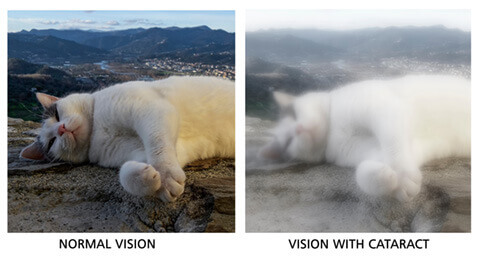
A cataract is a clouding of the natural lens inside your eye. This lens, located behind the iris (or colored part of your eye), works just like the lens of a camera – focusing light images on the retina, which sends the images to your brain.
The human lens, made mostly of protein and water, can become clouded – so clouded it keeps light and images from reaching the retina. Eye injury, certain diseases, or even some medications can cause the clouding. But, in over 90% of cases, clouding is caused by the aging process. A cataract is not a “film” over the eye, and neither diet nor lasers will make it go away. The best way to treat a cataract is to remove the old, clouded lens and provide a replacement.
A cataract can be the reason sharp images become blurred, bright colors become dull, or seeing at night is more difficult. It may also be why the reading glasses or bifocals that used to help you read, or do other simple tasks, no longer seem to help. Unfortunately, cataracts can´t be prevented, but removing the cataract and replacing it with an artificial lens can restore your vision and in many ways, significantly improve your quality of life. The time to have your cataracts removed is when the quality of your vision begins to put limits on your activities and enjoyment of life.





